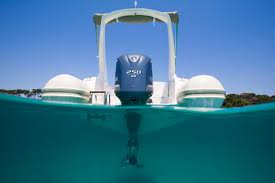There’s been a lot of unfortunate news about mishaps with propellers this season. With that in mind, here are some simple reminders.

Simple Steps to Minimize Propeller Injury
First, exercise some common sense!!!!
- Personally look at the area around your boat’s propeller before starting the engine
. Don’t count on others —see for yourself.
- Before you set out for the day, take a moment to inform your passengers of the location and dangers of the propellers, and call attention to any propeller warning labels around your boat.
- Never permit passengers to ride on the bow, gunwale, transom, seatbacks, or
other locations where they might fall overboard and under the boat. Accidents
can happen in the blink of an eye… and so can propeller strikes.
- Establish and communicate rules for swim platform use, boarding ladders, and seating. Your boat, your rules: be clear and firm!
- Make sure all passengers (including you) wear a lifejacket at all times.
- Consider an engine cut-off switch and other propeller safety devices,
including:
• Propeller guards
• Ringed propellers
• Propulsion alternatives
• Interlocks
• Sensors
• Anti-feedback steering
• Rear-facing video cameras
